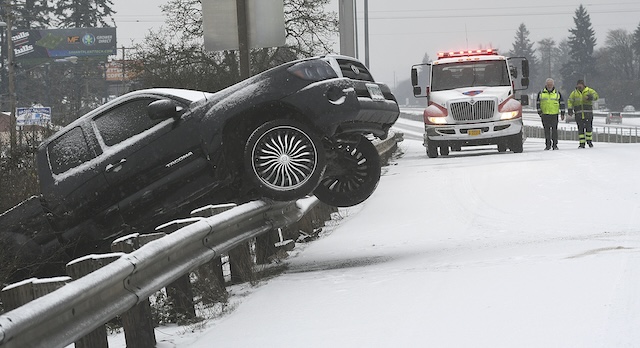Guest column: The environmental piffle published in Podunk papers
Published 12:00 am Friday, March 23, 2018

- Guest Column
The Bulletin generally does a good job reporting science, but its editorial page continues to get climate change embarrassingly wrong. It recently published a “debate” over what Einstein’s view of climate change would have been. Both “sides” concluded Einstein would have thought climate change is unimportant.
Perhaps a more appropriate dead scientist to consider in the context of climate is Galileo, who was persecuted by the church for discovering a heliocentric universe, thus dislodging humans from the center of God’s creation.
Contemporary climate scientists receive similar treatment from today’s free-market fundamentalists, who wax vigilant against the heresy of carbon dioxide (or any other) regulation.
Climate scientists have done a thorough, objective and empirical — which is to say, “scientific” — job of understanding how carbon emissions affect the planet. In what may be the largest scientific collaboration in human history, the Intergovernmental Panel on Climate Change, which is comprised of dozens of scientists who are primary researchers in climate, has issued reports every six years since 1989.
These scientists are the actual climate skeptics. To fuel their skepticism, they need not rely upon piffle published in Podunk papers or batted about the blogosphere. Instead, they revisit data and have the training needed to interpret it.
As their models improve, and as data sets grow, their certainty about human effects on climate has increased.
In 1995, the IPCC concluded that “the balance of evidence suggests a discernible human influence on global climate.”
Balance of evidence is a civil, not a criminal, standard of proof. In 2001, it was “new and stronger evidence that most of the warming observed over the last 50 years is attributable to human activities” (66 percent certainty). By 2007, it was “very likely” (90 percent certainty), and in 2016, “extremely likely” that more than half of warming was caused by humans.
The 2016 report added dryly that “the best estimate of the human-induced contribution to warming is similar to the observed warming over this period.”
The IPCC’s 2016 summary for policymakers concluded with “high confidence” that “without additional efforts to reduce greenhouse gas emissions beyond those in place today … global mean surface temperature(s) (will) increase in 2100 from 3.7 to 4.8°C compared to preindustrial levels.”
While that may make for dull reading, it nevertheless matters. The CEO of AXA, one of the world’s largest insurers, recently stated that “a 2°C world might be insurable, a 4°C world certainly would not be.”
In about a month, the city of Cape Town, South Africa, will lose all of its water in an unprecedented drought. The glaciers of La Paz, Bolivia, have melted and left the city high and dry. A 2017 study in the journal Nature, which is one of the top two scientific journals in the world, found that 50 percent of the Great Barrier Reef is dead or dying because of high ocean temperatures.
The Pentagon estimates that over half of military installations worldwide are vulnerable to extreme weather and climate risks. And a 2015 study in Nature estimated that unmitigated global warming will reduce global gross domestic product 23 percent by 2100.
The author of one side in The Bulletin’s Einstein “debate” is an emeritus (i.e. inactive) scientist who never conducted research on climate and is a member of the Carbon Dioxide Coalition, a group that transmogrified from the defunct George Marshall Institute, which since 2004 has received over $600,000 in funding from Koch Brothers foundations. The coalition’s web site has a link to its “white papers” on climate — in other words, papers that are not subject to peer review by experts, but are enough to fool certain newspaper editors, not to mention their dwindling population of readers who still place faith in a newspaper to understand the world.
— Matt Orr is an assistant professor of biology at Oregon State University-Cascades.








